Japanese Zelkova
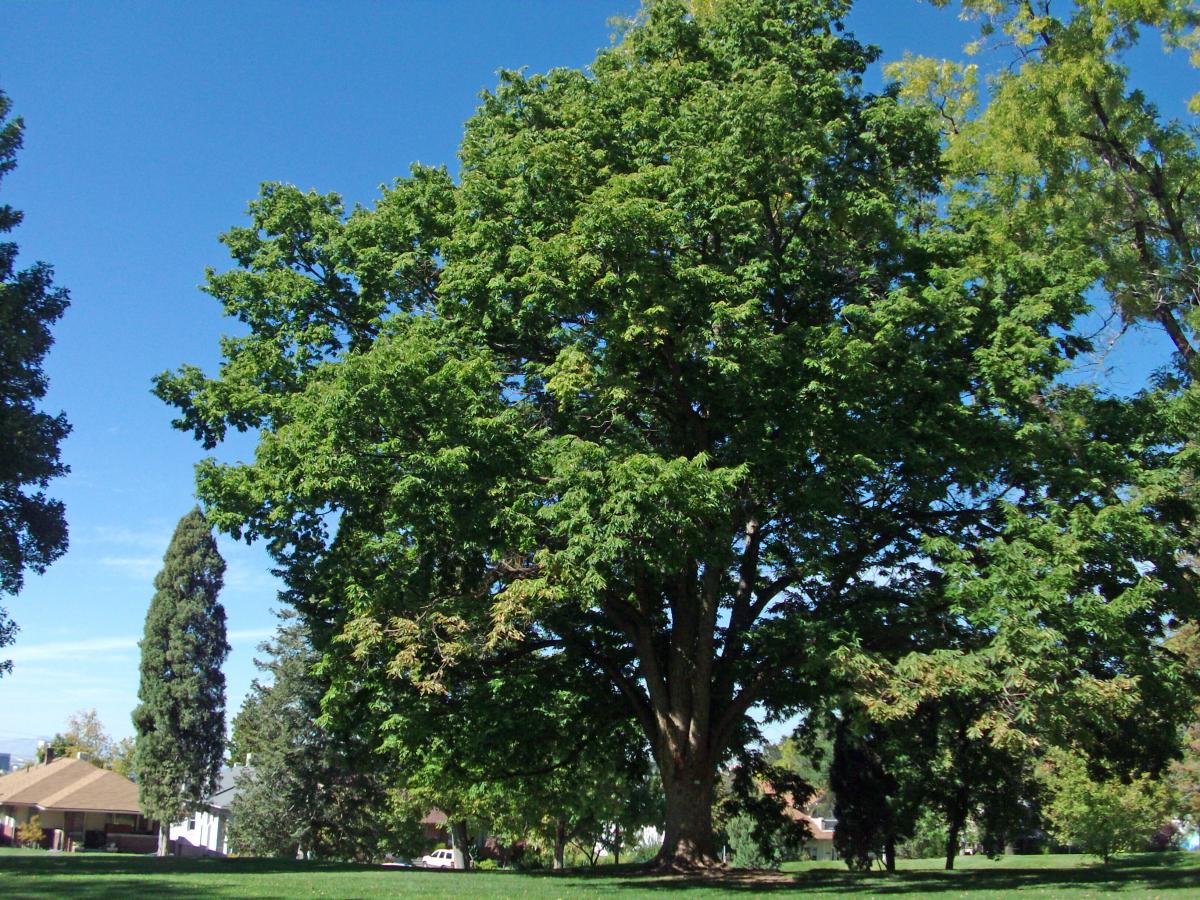
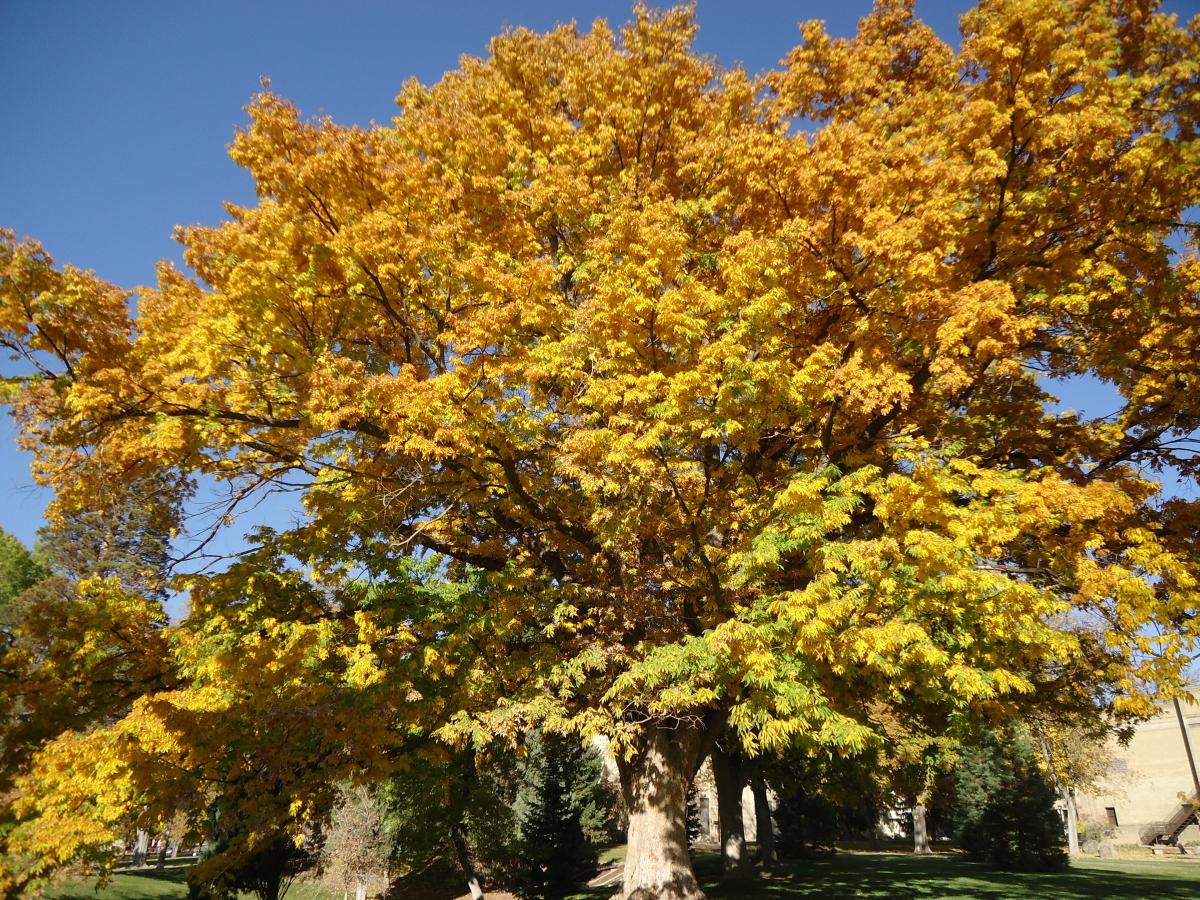
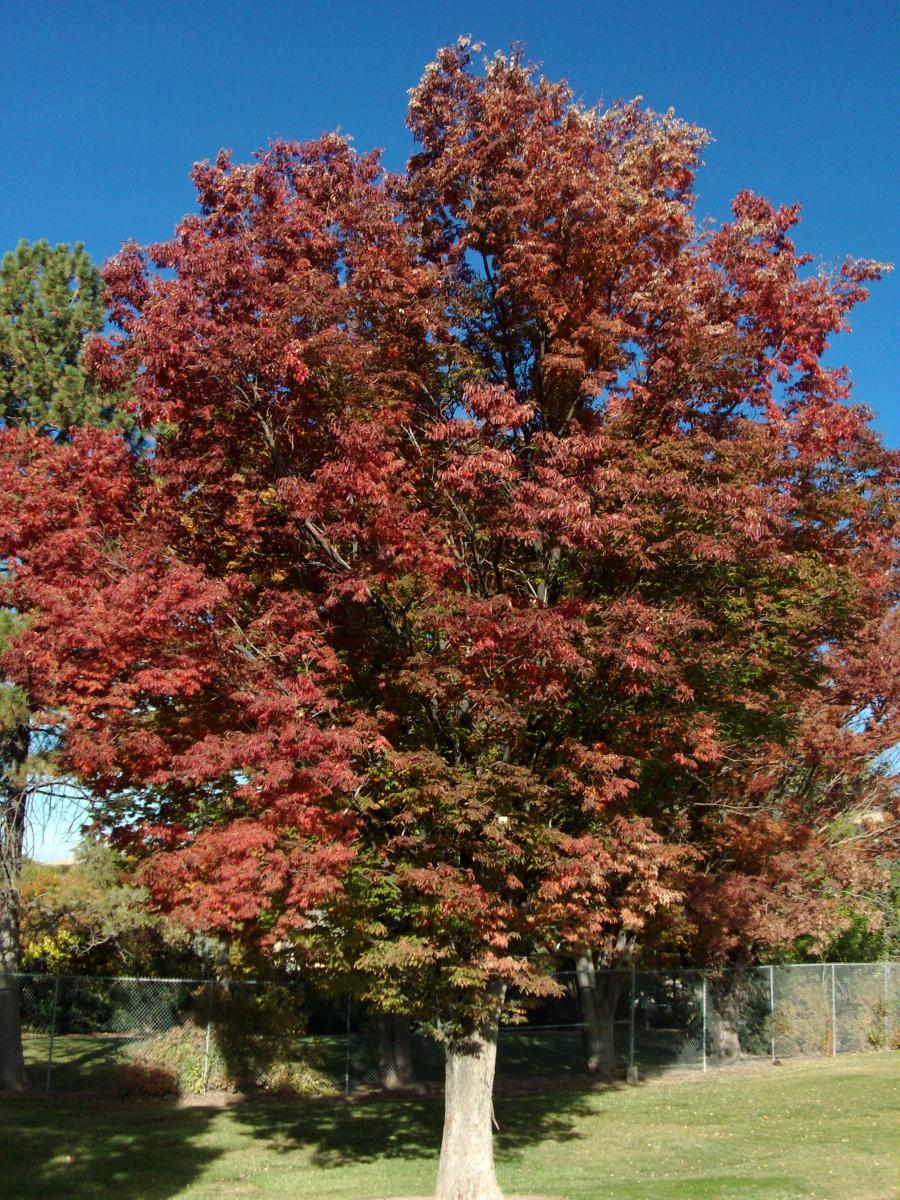
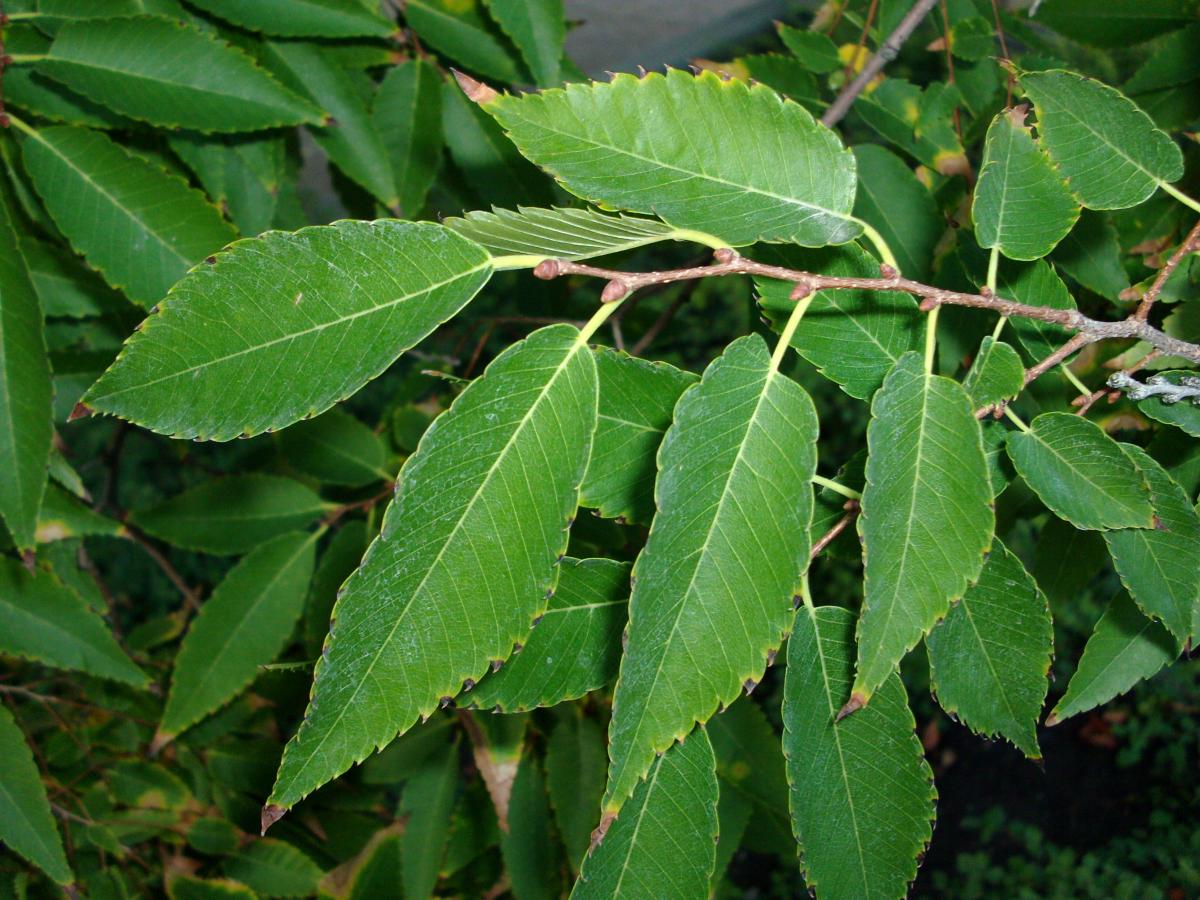
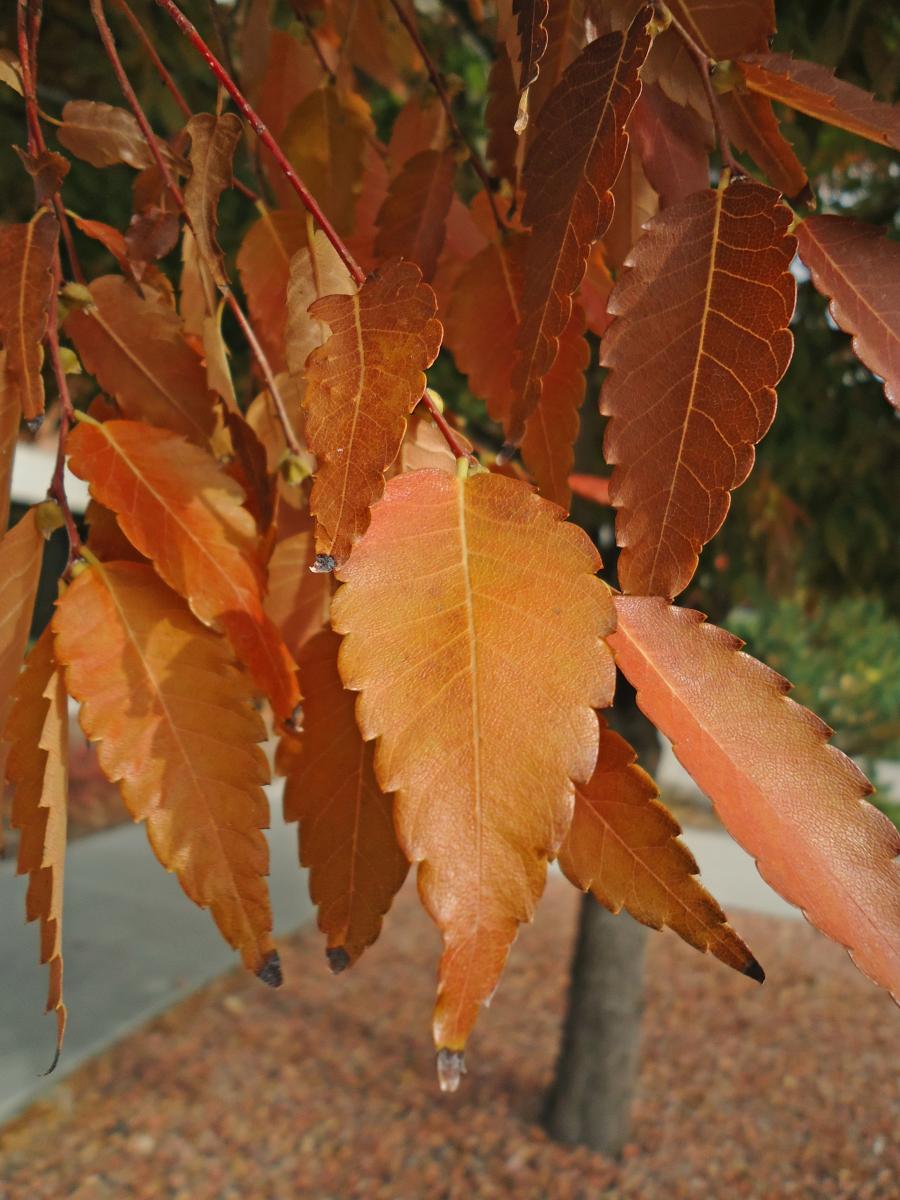
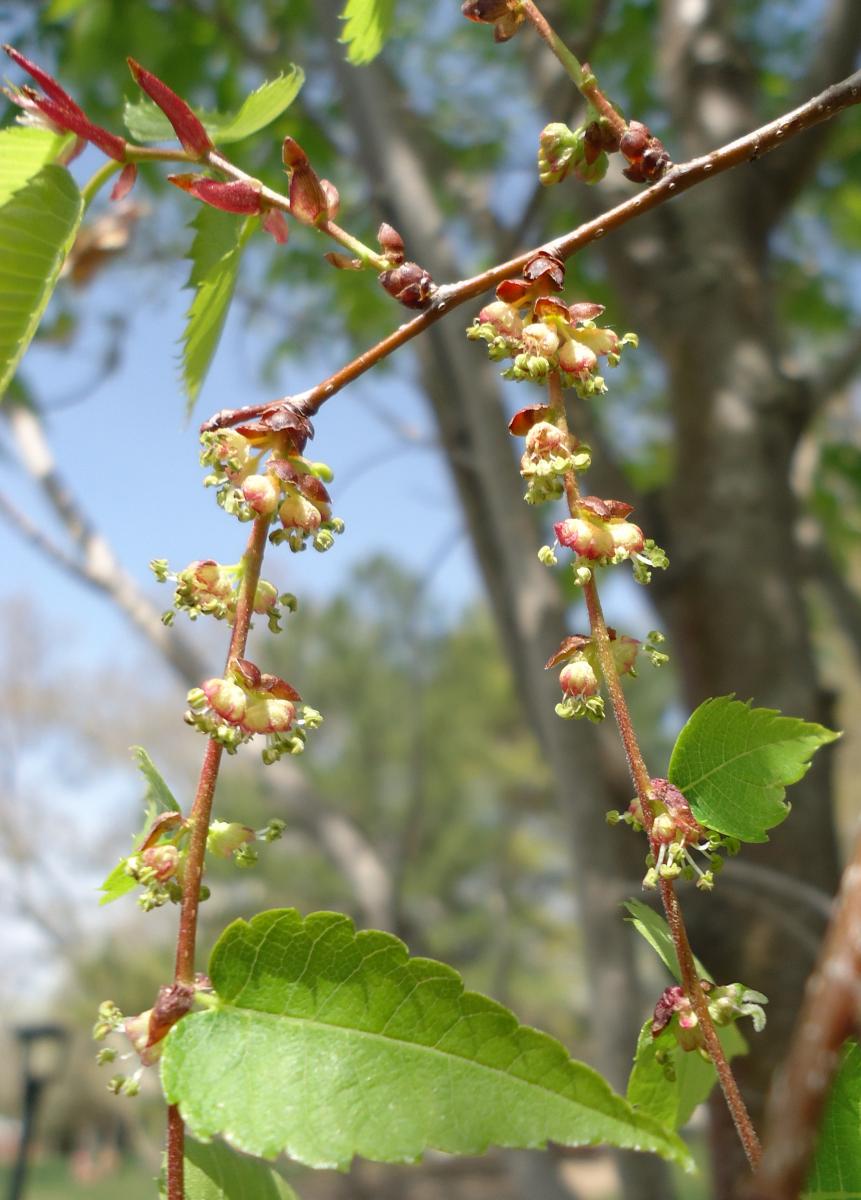
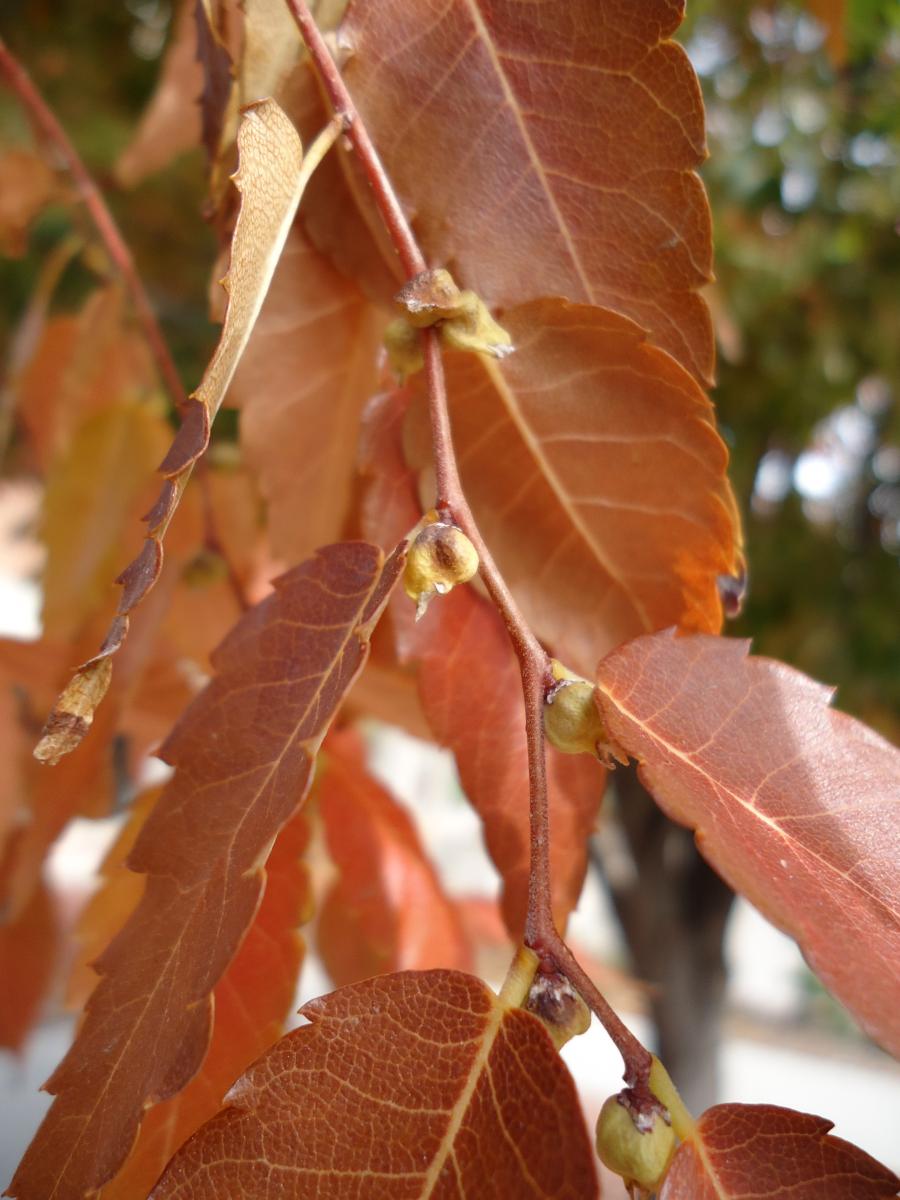
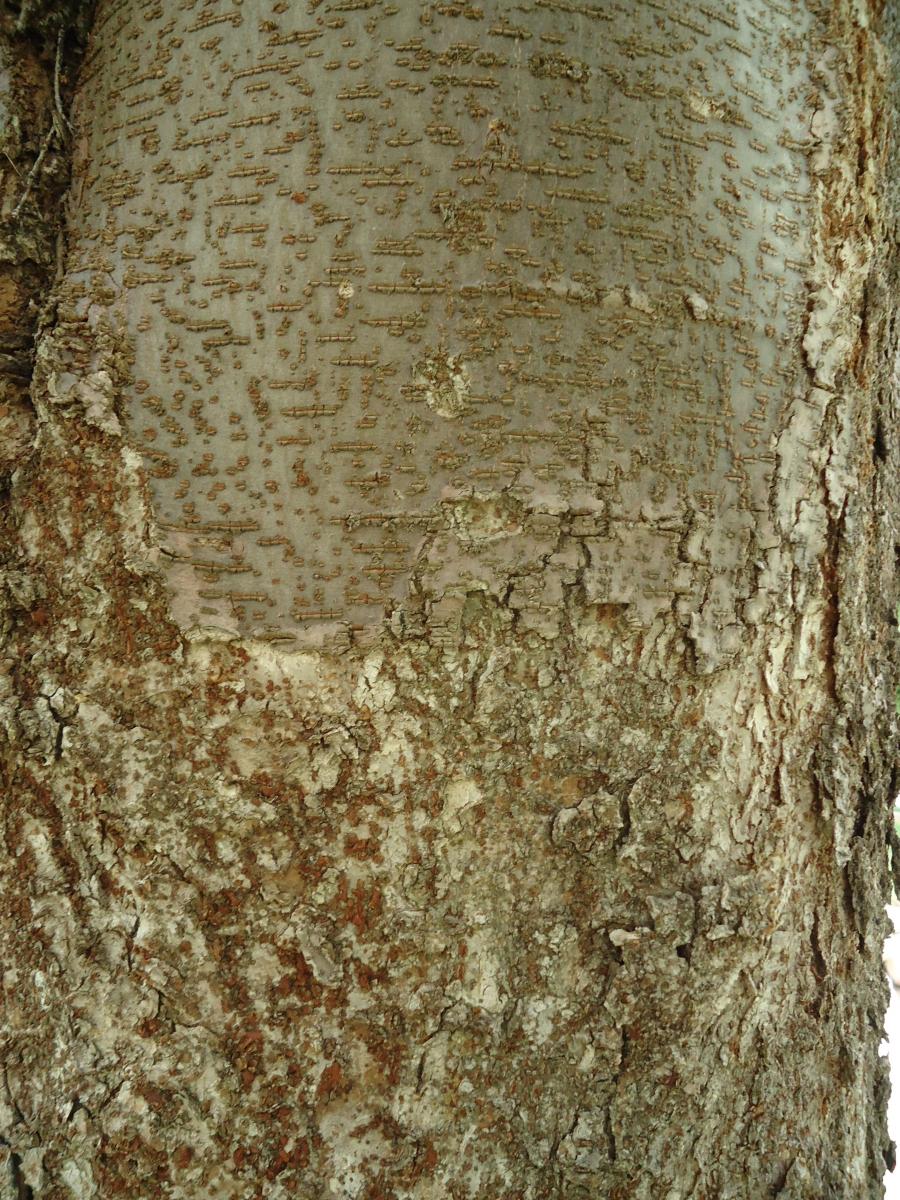
Zelkova serrata
Leaves: Deciduous. Leaves vary from 1 to 4 inches long by about 1 to 2 inches wide, and are oval shape with a sharp pointed tip. Leaves feel rough and have serrated edges with long, thin points. They are a dark green color in summer. Fall color is yellow-orange, deep bronze to rich maroon, sometimes brownish. Leaves may cling to tree most of the winter.
Bark/Twigs: Bark is mostly smooth when young, but covered in interesting, horizontal raised bumps called lenticels. Older bark becomes mottled and turns a dark grey-brown with interesting, exfoliating reddish-orange lenticels.
Flowers/Fruit: Inconspicuous flowers in spring (April) with leaves. Fruit is a tiny green seed/berry called a drupe, about ¼ inch across that ripens and turns brown in the fall.
Mature size and shape: Large. 50 to 80 feet high x 40 to 50 feet wide. Spread is generally less than height. Vase-shaped. Branches tend to arch with age. Many branches come out of the trunk at one point and can be crowded.
General information/special features: Plant in full sun. Moist, deep soils are best. Drought and wind tolerant. Good pollution tolerance. Pest and disease resistant.
Landscape use and maintenance: Good shade tree with spreading branches. Excellent tree for urban areas and parks. Good substitute for American Elm. Average growing rate. Average maintenance. Transplants readily. Often needs structural pruning when young to reduce branch crowding. Prune in fall.
USDA Hardiness Zone: 5 to 8
Family/Origin: Ulmaceae – Elm. Native to Japan and parts of Asia. Japan, Korea, Taiwan, Manchuria.
Campus Use: Common. Large specimens can be found in the grass area west of William Stewart Building (Bld 6) or along south side of Student Services Building (Bld 40). The tree west of the William Stewart Building (Bld 6) is on the Utah Big Tree Registry.
